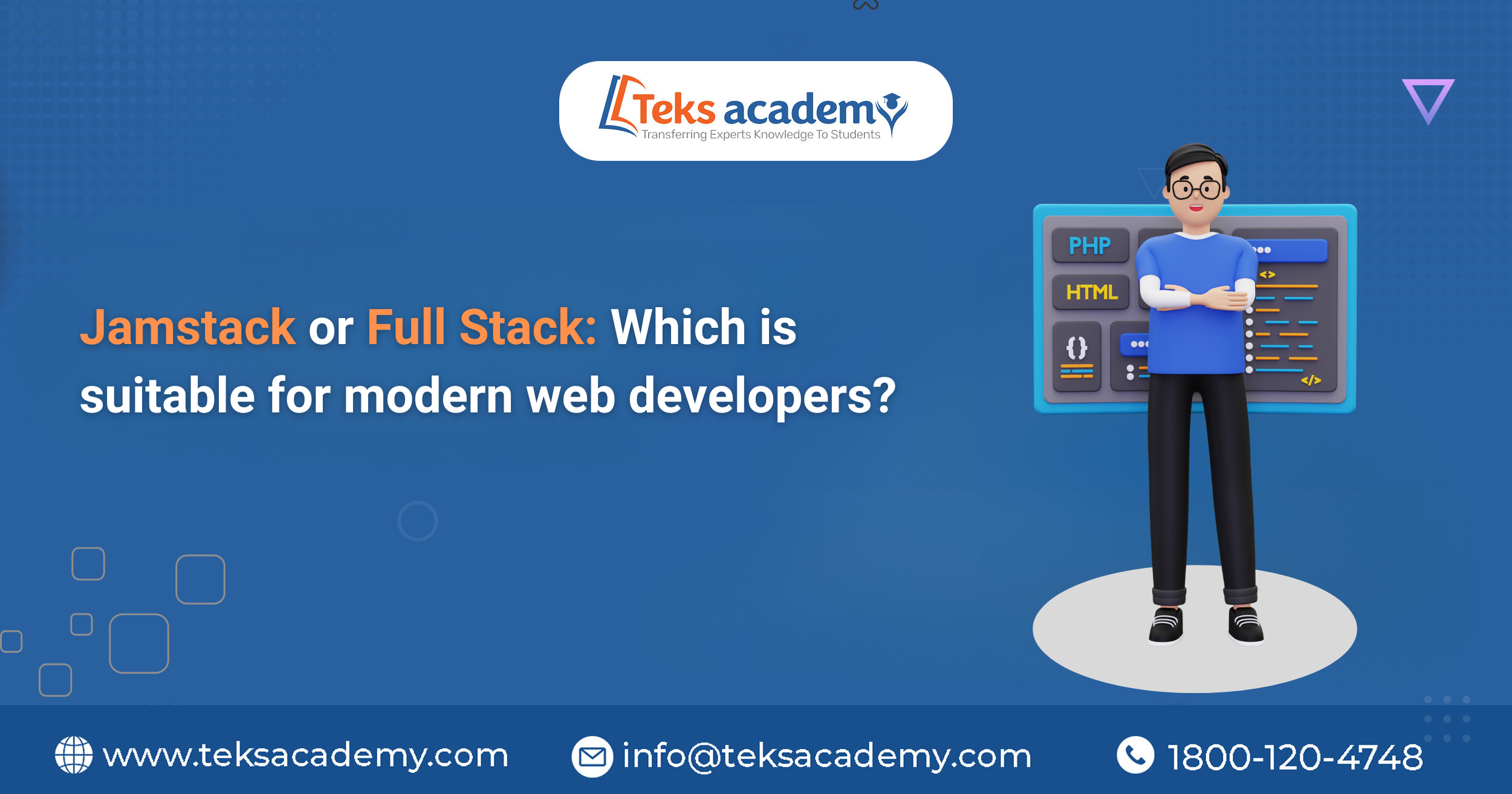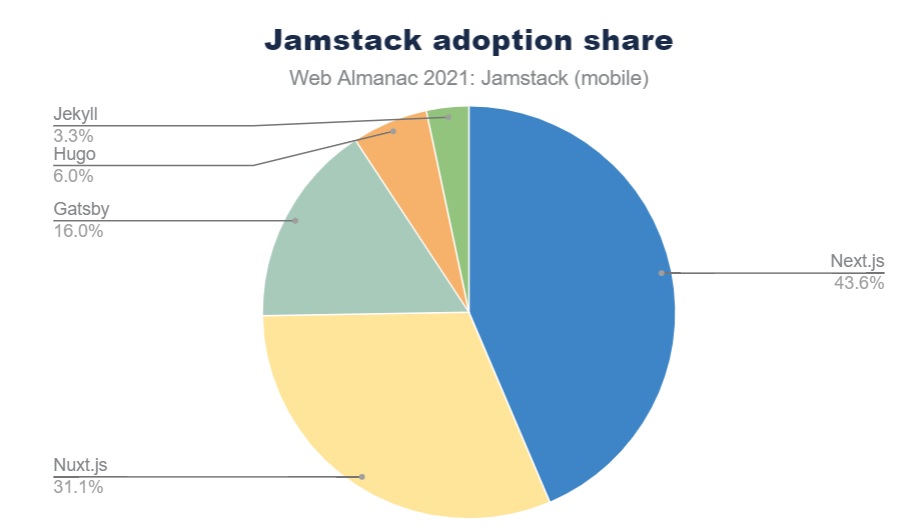

In the world of evolving web development, there is a common discussion about which approach is best suitable for web development. Jamstack or Full stack. Both have their pros and cons depending on the specific project, goals, and teams.
The Jamstack is a modern web development platform that helps developers build fast, secure, and scalable applications without using code. Jamstack makes every web application easy to create and manage.
This blog gives you more clarity on what Jamstack is, the differences between Jamstack and Full Stack, and their current trends in the web development industry.
Before we get into the debate between the Jamstack and the Full Stack development, let’s know the basics.
Jamstack defines JavaScript, APIs, and Markup, which is a major architectural approach for the development of the website. It functions differently from both the front end and the back end. It delivers excellent functions of the client-side JavaScript, retrieving data for API. The major components that use Jamstack include site generators like Next.js, Hugo, and Gatsby and content management systems like Contentful and Strapi.
JavaScript: JavaScript is used to add dynamic functionality to the website. In the structure of Jamstack, JavaScript is primarily used on the front end side for better function of the webpage.
Dynamic Functionality: Dynamic functionality in a website is the one that generates real-time pages and provides updated information.
APIs: Most of the APIs (Application Programming Interfaces) give dynamic data and required functionality for web applications. Jamstack doesn’t rely on applications. Instead, they use third-party APIs, microservices, or other server-less functions to run server-side operations.
Markup: Markup refers to the utilization of HTML templates for the purpose of organizing and arranging the content and visual presentation of web pages. In the Jamstack architecture, developers construct the templates in advance as part of the build process. This process creates static HTML files that content delivery networks (CDNs) can deliver directly to users.
Jamstack is particularly suitable for e-commerce platforms and content-driven websites. It supports a wide range of frontend frameworks, CMS, and API services.
The major advantages of Jamstack are listed.
Performance: CDNs store HTML files and assets that have already been rendered. This makes sure that pages load quickly and that users have great experiences.
Development Speed: Developers can work on both the front end and the back end without having to work with each other. This makes development go faster and maintenance easier.
Scalability: CDNs and serverless functions ensure websites work smoothly during traffic spikes.
Cost efficiency: The implementation of reduced server-side processing and optimized hosting leads to a decrease in infrastructure expenses.
Security: Separate front-end and back-end = smaller attack surface, making it tougher for attackers to breach websites.

Image courtesy: Almanac
We have already discussed Full Stack in detail in our previous blogs. Click on the link to learn about Full-stack development. https://blog.teksacademy.com/?s=Full+stack+development
Controllability: From simple websites to complex web apps, full-stack developers can work on a lot of different projects. They have full control over both the front end and the back end, which makes them useful to any team.
Real-time interactions: With Full-stack development, you have direct control over the server-side logic, which makes it easier to build real-time features like chat apps or tools for working together.
Customization: Full-stack developers possess complete authority over every aspect of the software stack, enabling the development of highly personalized solutions that are carefully aligned with the unique demands of a given project.
Immediate Updates: Changes to the backend that have an effect on the front end can be made without affecting service or requiring a full frontend stack restructuring.
Modern web developers expect the web development process to be efficient, user-friendly, and scalable based on the complexity of the web design. These expectations can vary depending on the specific project, team, and technology stack. Here are some of the common aspects that today’s modern web developers expect.
Responsive Design: Web design and development apps should work consistently on various devices and screen sizes.
Performance Optimization: Developers for the web are concerned with making their applications as efficient as possible. They expect access to resources and guidance on how to speed up the site and reduce delays.
Security Measures: Strong safety precautions and practices are expected to reduce common web vulnerabilities such as Cross-Site Scripting (XSS), Cross-Site Request Forgery (CSRF), and SQL injection. Additionally, they rely on the support of HTTPS security.
Development frameworks and Libraries: Developers frequently use frameworks like React, Angular, or Vue.js for front-end work, and they use frameworks like Express.js and Ruby on Rails for back-end work. They count on these frameworks to supply them with effective methods of programming.
Analytics and Monitoring: Developers use Google Analytics and New Relic for monitoring performance, tracking user behavior, and gaining insights.
The choice between Jamstack and Full Stack depends on career goals and project type.
The primary focus is on
Whether as a Full-stack web developer, choosing Jamstack or full-stack development depends on your goals. Remember that the landscape of web development is ever-changing and that success in this field requires a willingness to learn and adapt to new technologies and methods. Continuous learning and improvement are crucial in today’s web development industry, whether you choose to specialize in Jamstack or become a versatile Full Stack developer.
Investigate local web developers near me using Google Maps and educational institutions to find Full-stack training and web application development services, respectively. Keep in mind that your decision should reflect your interests and professional aspirations; after careful consideration, you can then make a choice that will help you succeed in the field of web development.
